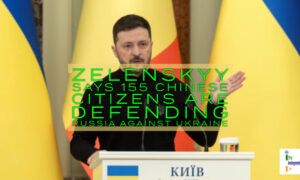
European leaders have approved a package of energy subsidies and financial measures aimed at reducing the dependency on Russian coal, oil and gas
European leaders have approved a package of energy subsidies and financial measures aimed at reducing the dependency on Russian coal, oil and gas.
The Heads of Government of the European Union (E.U.) voted to subsidise electricity and gas consumed by households and businesses this winter, amidst the rising energy prices. They have asked the European Commission to propose price caps, above which the subsidy would kick in.
Governments would pay for it by clawing back electricity producers’ and gas importers’ excess profits. Over the last year, the gas prices have risen 8-fold to € 340 (U.S. $ 345) per megawatt hour last month. The electricity prices have tripled this year mainly because of Russia’s invasion of Ukraine and the sanctions imposed by the West on Russia.
Greece has committed to spend 6.5% of GDP to split electricity bills with consumers 50-50. Germany will spend 2.6% of GDP to provide relief to households and businesses. While the E.U. has banned the import of Russian coal and oil, it has not banned the import of gas. This is because the global supply of Liquefied Natural Gas (LNG) was already oversubscribed after the post-pandemic global rebound and transition to cleaner fuels, but it’s also because some EU countries have no LNG import facilities.
Germany along with Central and Eastern Europe are dependent on gas brought in through Russian pipelines, which supplied 1/3rd of its gas last year. Russia has threatened to cut off this vital supply unless the E.U. lifts sanctions and stops weapons deliveries to Ukraine. In May 2022, Russia cut gas flows to Finland and Bulgaria as they refused to pay in Russian Roubles.
Besides, Germany has halted the process of certifying the newly built Nord Stream 2 pipeline due to Russia’s invasion of Ukraine. The pipeline was to begin delivering 55 billion cubic metres of gas to Germany this year. Additionally, German industrial giant – Siemens has not been able to deliver gas compressor turbines to Russia. Without them, Russia says it cannot pressurize the Nord Stream 1 pipeline. Russia has already stopped the flow of gas from Nord Stream 1.
Germany has been furiously buying up gas tankers to act as offshore storage and is building regasification plants onshore. It is supposed to bring one LNG terminal online at the end of this year at Wilhelmshaven and another early next year at Brunsbuttel. So, it might have some LNG imports in the second half of the winter.
Russian gas still flows through the Yamal pipeline that crosses Ukraine and the TurkStream pipeline that runs under the Black Sea. About 10 Billion Cubic Metres Per Annum (BCMA) are still flowing through TurkStream. The system through Ukraine is working at about 50-60% capacity. The United States (U.S.) has promised to increase LNG exports to Europe, but those are dependent on private sector capacity.







